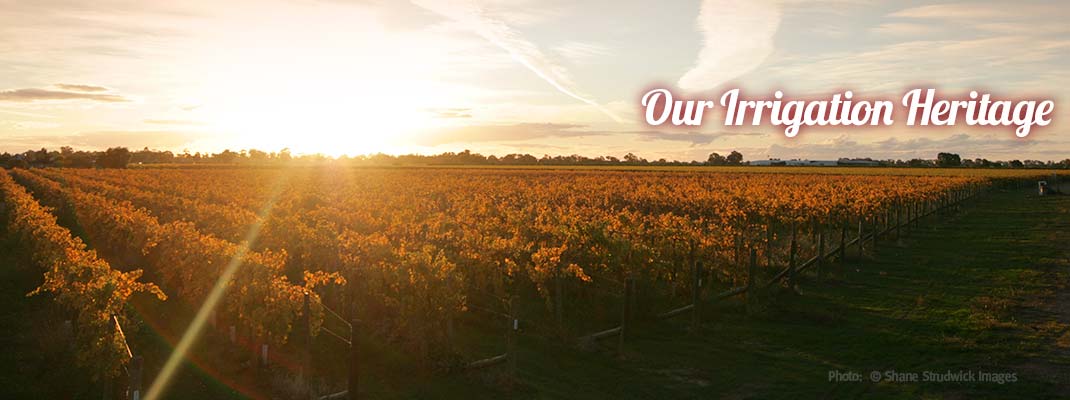Pomona
Pomona takes it name from the largest island of the Orkney Group, to the north of Scotland, between John O’Groats and the Shetland Isles.
Originally known as ‘Seven Mile Point’, the district became Pomona, taking its name from a farm holding in the area owned by former Wentworth stalwart and Mayor, John Dunn. His wife, Catherine (nee Muir) was Pomona Island born.
The Dunns arrived in Wentworth in 1876 and John went on to become a community leader and important businessman. He is also thought to be Sunraysia’s first winemaker, producing his debut drop in the late 1880s. There is no report of how it tasted!
On his selection, comprising rich, alluvial river soils, his predominant experiment was with orchard and vine irrigation, drawing his water from the Darling River and following in the footsteps of the Canadian Chaffey Brothers in Mildura.
It was success!
The Darling River Irrigation Company purchased Pomona Farm in 1910, instigating the first extensive irrigation development.
The company developed stone fruit and citrus orchards as well as vines.
Perhaps the project was not as successful as expected, or maybe the owners wanted recoup their investment, but a decision was made to subdivide Pomona into smaller blocks and sell them off. This was about 1919. The development was after known as the Pomona Irrigation Estate.
The original Estate comprised about 500 hectares (1228 acres) divided into 20-hectare (50 acre) blocks. It was described by the press at the time as “an oasis of cultivation in the desert flats of the Darling”.
The smaller holdings flourished, but the 1920s were turbulent times and legal wrangles over vital irrigation water supplies took their toll. Development came to a standstill.
Eventually these challenges were overcome when, in the early 1930s, the Water Conservation and Irrigation Commission stepped in. Representing the State Government, the Commission formed the Pomona Irrigation Trust to ensure equitable water supplies for all.
With water entitlements assured by Government control, the area went ahead in leaps and bounds.
Today it is a cohesive community, proud of its pioneering irrigation history while being at the forefront of modern practice.

